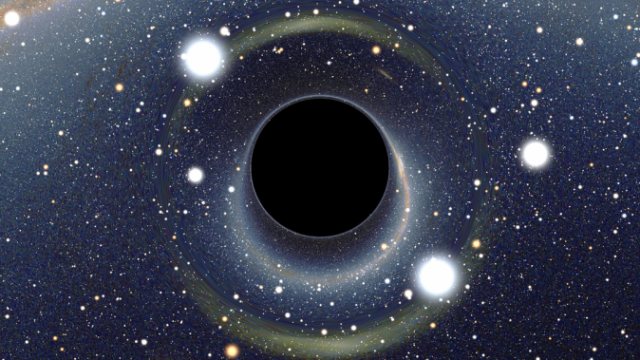You don’t need to be a professional astronomer to find black holes. Here’s how you can spot one, using just your laptop or phone.
Radio Galaxy Zoo is an online platform that allows cosmically-inclined individuals to make valuable contributions to astronomy, by identifying radio jets from supermassive black holes (SBHs) and matching these features to their host galaxies. Through the platform — which has now been live for a year — volunteers have already eyeballed more than 1.2 million images of space, taken by the Very Large Array in New Mexico, CSIRO’s Australia Telescope Compact Array, and NASA’s Spitzer and WISE Space Telescopes. Ordinary people have matched 60,000 radio sources to their host galaxies, a feat which would have taken a single astronomer working 40 hour weeks 50-odd years.
And they have done so with as much accuracy as the experts, according to a study published this week in The Monthly Notices of the Royal Astronomical Society.
Hunting for Black Holes
Supermassive black holes are the gravitational lynchpins at the center of most, if not all galaxies, and they have a lot to tell us about the evolution of the Universe over cosmic time. Trouble is, they’re rather tough to spot, seeing as how they like to swallow light and matter. But occasionally, a SBH will belch spectacular jets of star-forming materials into its cosmic neighbourhood. These jets, which glow nice and bright in the radio part of the electromagnetic spectrum, are a telltale sign that a SBH is lurking nearby.
That seems like great news for scientists who want to study SBHs. But! Many of these radio-hot features have weird, complex structures that don’t sit so well with computer algorithms. We need human eyeballs to ID them, and to put it bluntly, we’ve got way more pictures of space to sift through than we do astronomers.

Radio Galaxy Zoo interface, illustrating the three steps required to make a classification. Image Credit: The Radio Galaxy Zoo Project
Which is where Radio Galaxy Zoo — a spinoff of the larger Galaxy Zoo project that launched in 2007 — comes in. Volunteers are given telescope images taken in both the radio and infrared parts of the electromagnetic spectrum, and asked to compare the pictures and match radio sources to their host galaxies.
Before they’re unleashed on the Universe, volunteers need to take a training tutorial to get their galactic eyeballs up to snuff. In the new research paper, astronomers validated the effectiveness of this training by asking volunteers to look at 100 images, and comparing what they “saw” to what a cohort of professional astronomers sees. The result?
“With this early study we’ve comfortably shown that anyone, once we’ve trained them through our tutorial, are as good as our expert panel,” astronomer and Radio Galaxy Zoo architect Julie Banfield said in a statement.
Citizen Astronomers
Given Radio Galaxy Zoo’s promising start, astronomers are hopeful that volunteers will soon start to play a much bigger role in analysing large radio datasets. Over the next five to ten years, a new generation of telescopes and upgrades, including the Australian SKA Pathfinder, will perform all-sky surveys across a broad region of the electromagnetic spectrum. These snapshots of the sky are expected to detect over 100 million radio sources. Which means there’ll be an endless amount of image analysis to do.

Radio jet features inside a radio-hot galaxies. Image Credits: The Radio Galaxy Zoo Project
Astronomy has always been a field ripe for enthusiastic amateurs. But as University of Rochester astronomer Adam Frank points out, it used to be the case that you needed a telescope and a fair bit of training to get involved. That’s now starting to change, as more and more scientific questions tap into massive digitised datasets.
“There’s so much digitised data now that it sorta overwhelms our computer algorithms,” Frank told Gizmodo. “Big data is always most powerful when you have a human trainer or a human guiding it.”
Frank, for his part, sees the growing role of citizen science in astronomy as a win-win for everyone.
“I think these [online] citizen science programs are awesome,” Frank said. “On the one hand, it’s unbelievably useful to get people involved. On the other, what could be cooler than asking people to be scientists? What better way for people to learn how science works?”
So, if you’ve dreamed of trekking across the far reaches of the Virgo Supercluster, or if you’re just plain sick of slinging angry birds at pigs on your lunch break, head on over to Radio Galaxy Zoo and start your training! The Universe is waiting.
[Read a pre-print of the scientific paper at arXiv via ICRAR]
Top image: Artist’s concept of a black hole, via Wikimedia
